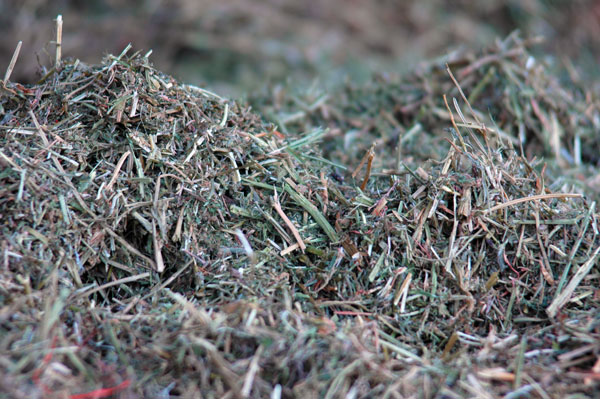Testing your hay will boost your bottom line.

Back when he first started with University of Missouri Extension, Eldon Cole attended an event that featured Jim Ross, the state livestock specialist at the time, on selecting the worst bull in the county. “I don’t recall all the specifics but I believe Jim just looked at the candidates and picked out visually what he thought was the absolute worst ‘looker.’ Then the winner, or loser, was to go directly to slaughter or be castrated.”
While visual appraisal is still important in bull selection, taking a peek at the performance data is important, too. It’s no different when buying hay.
“I think if we were to have a ‘worst hay in the county or region’ contest, I may have a winner,” says Cole, the Extension beef specialist in Lawrence County. “Like Jim’s selection of the worst bull, I’m basing my choice on just looks and not on objective evaluation where energy, relative feed value or protein analysis was done in a lab. My ‘winner’ is 2-year old, outside-stored, sericea lespedeza.”
Cole made a farm visit recently because a cow died near a bale of old hay that had been set out the day before. The owners suspected there might be a poisonous weed in the hay.
Cole couldn’t find any poisonous plants but was amazed at the low quality of the hay. “I’m guessing, but it had to be 3% or less on protein and down in the 30s on total digestible nutrients (TDN). The neutral detergent fiber (NDF) was surely into the 80s.”
As he tore through the bale searching for possible poisonous plants, he’d find a pocket of sericea leaves but mostly just woody stems that smelled moldy.
“With a favorable cattle market this year, I find there is more interest in spending a little money on various items for beef cattle. If you’re thinking about a feed purchase, I encourage you to first invest in a hay or silage test. Some have tried new forages or new varieties, so this is a good time to check them out before buying a supplement. If you’re a good forage producer, you may not need any supplement,” Cole says.
What the numbers mean
Cole says another recent question came from a cattleman who had tested six different lots of hay. The producer, who probably hadn’t tested his hay before, wasn’t sure how to interpret the results.
“First, as I looked over the test results, five of the six were between 11% and 13% crude protein on a dry matter basis. That means protein was adequate for all cow classes from middle gestation to early lactation.”
The TDN content of the six forages went from 45% to 57.2%. Hay scoring between 54% and 57% TDN should meet most cow herd’s TDN requirement except for exceptionally heavy milking cows, late stage, first-calf heifers and those same heifers after calving. “In these cases, TDN in their forage or diet should be in the 60% plus range,” he says.
Cole says these case studies should make a good case for keeping those high-energy-need heifers and cows separate from older cows that can do quite nicely on good hay or haylage only. “I know this calls for extra pastures or lots and extra labor, but sorting helps economize your purchased feed needs,” he adds.
As for the low-testing hay (45% TDN), it needs lots of help, he says. A 1,200-lb. cow has a daily dry matter requirement of around 30 lbs. per day, so NDF is a factor to be considered. For instance, Cole says dairy nutritionists feel that on dairy-quality hay, cows will only consume around 1.2% of their body weight in NDF, viewed by many as an intake limiter.

Photo Gallery: Home Is Where You Hang Your Hat
At BEEF, we're proud to celebrate the ranching lifestyle. Enjoy 70+ photos from our readers that showcase their country home. Enjoy the gallery now.
“It may not be an exact figure with beef cows but if that’s close, the low TDN hay contains 78.9% NDF. This limits the cow’s voluntary intake to about 18 lbs. of that hay daily,” he says.
By only eating 18 lbs. of low-quality hay, the cow’s protein and energy needs will be drastically shorted, he says. “These limits result in weight loss, reduced milk production, delayed return to heat, lower-quality colostrum and lots of other bad things. The bottom line is to find out how good or bad your hay is by testing some of it. Testing pays!”
You might also like:
15 photos of cowboy hats in action
Breathtaking photos of winter on the ranch
6 tips for buyers & sellers at a cattle sale
Prevention and treatment of cow prolapse
Bale grazing lets cows feed themselves
8 tips for being a better ranch manager in 2015
About the Author(s)
You May Also Like



